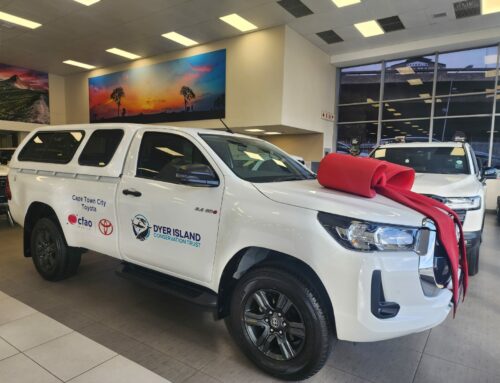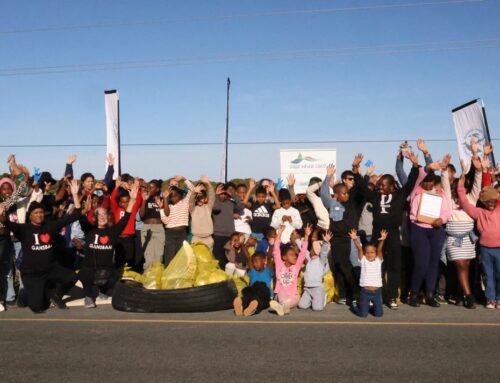TURTLE STRANDINGS – TALK AT THE AFRICAN PENGUIN AND SEABIRD SANCTUARY
March 08, 2018 Dyer Island Conservation Trust
The Two Oceans Aquarium team recently did a road show to establish drop off points along the coastline and brief everyone on what to do should they find a stranded turtle. Guests at the African Penguin and Seabird Sanctuary learnt what to do with a turtle and what they can do from an environmental perspective every day to help turtles and all our marine life. Key messages included not using straws, balloons, plastic bags or water bottles, cutting any circular plastic loops that could entangle animals, and correct disposal of cigarette butts, classified as one of the worst pollutants.
The team included Talitha Noble (Conservation co-ordinator and head of turtle rehab), Hayley McLellan (Environmental Campaigner and brainchild of the ‘Rethink the Bag Campaign’), Inge Adams (WWF intern at the Aquarium and Turtle Princess) and Zoku the fluffy toy (turtle mascot and cuddle buddy).
“As the winter months approach the incidence of turtle strandings increases. Juvenile turtles (mainly loggerheads) are swept down from the northern coast of KwaZulu-Natal (where they hatch) in the mighty Agulhas Current and are washed ashore by stormy seas. They are often in a weak condition, having been exposed to cold water and are suffering from dehydration.
The Aquarium rehabilitates these turtles in preparation for their release back into the warm ocean. The turtles range in size from 25g up to 80kg. Rehabilitation can last more than a year, depending on the needs of each individual, as some are not only suffering from hypothermia but are also injured and require treatment.
We also rehabilitate sub-adult and adult turtles that have washed up on the shoreline. Besides loggerheads, we’ve rehabilitated green, olive ridley, hawksbill and leatherback sea turtles. Seven species of sea turtles live in the warm tropical oceans, all considered endangered due to the threats faced. Only loggerhead and leatherback turtles nest on the South African coast although green turtles are very common offshore.”
“






